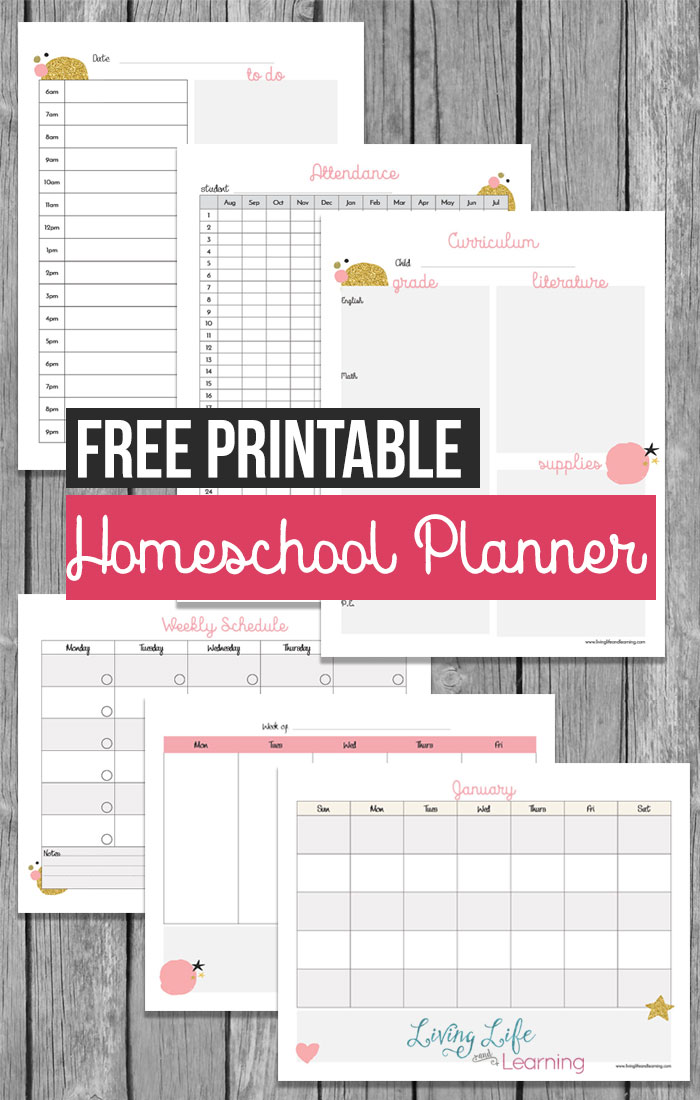How to Thrive as a Homeschooler
The verdict is in: Homeschooling works!
An estimated 2 million children are homeschooled in the United States. Families across America report deep satisfaction and great academic results. How do they do it?
Want tips on how to thrive as a homeschooler? Keep reading.
>> See more ideas on How to Homeschool Successfully
 Although your first instinct might be to run to the curriculum catalogs, I would like to suggest that you take some time, as a family, to think about these six principles:
1. Do you know why you are homeschooling? Taking some time to articulate and write down your vision for your family and for your homeschool can be one of the most important things you can do. Why? On the bad days – and you will surely have them – you can that this out and remind yourself of your vision, and be encouraged to keep the course.
2. A second principle is to take a hard look at your commitment levels. Are you working, in or out of the home, full time or part-time? Our lives, as women, are consists of seasons. The season of small children is a challenging one. What are your time constraints, personally and as a couple if you are married?
If you are heavily involved in charitable or volunteer pursuits, these might have to be set on the shelf for a season. That’s OK. Your children are only young once. Especially when they are young, you are their world. Never again will you have this much influence on them. When this time is gone, it is gone. Remember that!
3. A 3rd principle for thriving is to settle on an approach. Perhaps homeschooling was simpler in the earlier days.
The biggest decision was,”Shall we do it?“
Now the biggest decision is, “How shall we do it?“
Remember there is a great diversity of opinion and what works for one family may not work for yours.
The beauty of homeschooling is that you are free to choose your approach. One family might be ”Charlotte Mason“ for literature, but they are a Saxon Math family. They may be unschoolers, letting their children find their own path in science and history, but are using a programmed text for spelling and grammar.
Many families begin their journey with a highly structured approach because they want to make sure they are doing everything correctly. As the years pass and they mature and gain confidence, they feel they can relax and begin to incorporate more child‑led learning. Other families begin with a child‑centered approach and switch to a greater structure when they sense that the child requires it.
4. To really connect with your child’s learning, spend some time discerning their learning style.
Is he a visual, verbal or kinesthetic learner?
Although your first instinct might be to run to the curriculum catalogs, I would like to suggest that you take some time, as a family, to think about these six principles:
1. Do you know why you are homeschooling? Taking some time to articulate and write down your vision for your family and for your homeschool can be one of the most important things you can do. Why? On the bad days – and you will surely have them – you can that this out and remind yourself of your vision, and be encouraged to keep the course.
2. A second principle is to take a hard look at your commitment levels. Are you working, in or out of the home, full time or part-time? Our lives, as women, are consists of seasons. The season of small children is a challenging one. What are your time constraints, personally and as a couple if you are married?
If you are heavily involved in charitable or volunteer pursuits, these might have to be set on the shelf for a season. That’s OK. Your children are only young once. Especially when they are young, you are their world. Never again will you have this much influence on them. When this time is gone, it is gone. Remember that!
3. A 3rd principle for thriving is to settle on an approach. Perhaps homeschooling was simpler in the earlier days.
The biggest decision was,”Shall we do it?“
Now the biggest decision is, “How shall we do it?“
Remember there is a great diversity of opinion and what works for one family may not work for yours.
The beauty of homeschooling is that you are free to choose your approach. One family might be ”Charlotte Mason“ for literature, but they are a Saxon Math family. They may be unschoolers, letting their children find their own path in science and history, but are using a programmed text for spelling and grammar.
Many families begin their journey with a highly structured approach because they want to make sure they are doing everything correctly. As the years pass and they mature and gain confidence, they feel they can relax and begin to incorporate more child‑led learning. Other families begin with a child‑centered approach and switch to a greater structure when they sense that the child requires it.
4. To really connect with your child’s learning, spend some time discerning their learning style.
Is he a visual, verbal or kinesthetic learner?
 Christine Field is a deeply flawed, Christian mom, author, speaker, attorney and listener with a rich variety of life experiences. I advocate and champion mothers and family life. She helps weary, discouraged moms find solutions for unexpected family challenges so they can know peace, joy (and a little bit of fun!) in the divine calling of mothering. Maybe you can relate to her non-Pin-worthy life. If she can ever serve or encourage you, please find her on Facebook, Twitter or Pinterest.
Christine Field is a deeply flawed, Christian mom, author, speaker, attorney and listener with a rich variety of life experiences. I advocate and champion mothers and family life. She helps weary, discouraged moms find solutions for unexpected family challenges so they can know peace, joy (and a little bit of fun!) in the divine calling of mothering. Maybe you can relate to her non-Pin-worthy life. If she can ever serve or encourage you, please find her on Facebook, Twitter or Pinterest.

 Although your first instinct might be to run to the curriculum catalogs, I would like to suggest that you take some time, as a family, to think about these six principles:
1. Do you know why you are homeschooling? Taking some time to articulate and write down your vision for your family and for your homeschool can be one of the most important things you can do. Why? On the bad days – and you will surely have them – you can that this out and remind yourself of your vision, and be encouraged to keep the course.
2. A second principle is to take a hard look at your commitment levels. Are you working, in or out of the home, full time or part-time? Our lives, as women, are consists of seasons. The season of small children is a challenging one. What are your time constraints, personally and as a couple if you are married?
If you are heavily involved in charitable or volunteer pursuits, these might have to be set on the shelf for a season. That’s OK. Your children are only young once. Especially when they are young, you are their world. Never again will you have this much influence on them. When this time is gone, it is gone. Remember that!
3. A 3rd principle for thriving is to settle on an approach. Perhaps homeschooling was simpler in the earlier days.
The biggest decision was,”Shall we do it?“
Now the biggest decision is, “How shall we do it?“
Remember there is a great diversity of opinion and what works for one family may not work for yours.
The beauty of homeschooling is that you are free to choose your approach. One family might be ”Charlotte Mason“ for literature, but they are a Saxon Math family. They may be unschoolers, letting their children find their own path in science and history, but are using a programmed text for spelling and grammar.
Many families begin their journey with a highly structured approach because they want to make sure they are doing everything correctly. As the years pass and they mature and gain confidence, they feel they can relax and begin to incorporate more child‑led learning. Other families begin with a child‑centered approach and switch to a greater structure when they sense that the child requires it.
4. To really connect with your child’s learning, spend some time discerning their learning style.
Is he a visual, verbal or kinesthetic learner?
Although your first instinct might be to run to the curriculum catalogs, I would like to suggest that you take some time, as a family, to think about these six principles:
1. Do you know why you are homeschooling? Taking some time to articulate and write down your vision for your family and for your homeschool can be one of the most important things you can do. Why? On the bad days – and you will surely have them – you can that this out and remind yourself of your vision, and be encouraged to keep the course.
2. A second principle is to take a hard look at your commitment levels. Are you working, in or out of the home, full time or part-time? Our lives, as women, are consists of seasons. The season of small children is a challenging one. What are your time constraints, personally and as a couple if you are married?
If you are heavily involved in charitable or volunteer pursuits, these might have to be set on the shelf for a season. That’s OK. Your children are only young once. Especially when they are young, you are their world. Never again will you have this much influence on them. When this time is gone, it is gone. Remember that!
3. A 3rd principle for thriving is to settle on an approach. Perhaps homeschooling was simpler in the earlier days.
The biggest decision was,”Shall we do it?“
Now the biggest decision is, “How shall we do it?“
Remember there is a great diversity of opinion and what works for one family may not work for yours.
The beauty of homeschooling is that you are free to choose your approach. One family might be ”Charlotte Mason“ for literature, but they are a Saxon Math family. They may be unschoolers, letting their children find their own path in science and history, but are using a programmed text for spelling and grammar.
Many families begin their journey with a highly structured approach because they want to make sure they are doing everything correctly. As the years pass and they mature and gain confidence, they feel they can relax and begin to incorporate more child‑led learning. Other families begin with a child‑centered approach and switch to a greater structure when they sense that the child requires it.
4. To really connect with your child’s learning, spend some time discerning their learning style.
Is he a visual, verbal or kinesthetic learner?
- A visual learner learns by seeing and watching demonstrations.
- A kinesthetic learner learns by doing and having direct involvement with his subject material.
- A verbal or auditory learner learns through verbal instruction, either from others or self. This child might benefit from tape recording what needs to be memorized. They can read it once into the recorder and play it back hundreds of times.
 Christine Field is a deeply flawed, Christian mom, author, speaker, attorney and listener with a rich variety of life experiences. I advocate and champion mothers and family life. She helps weary, discouraged moms find solutions for unexpected family challenges so they can know peace, joy (and a little bit of fun!) in the divine calling of mothering. Maybe you can relate to her non-Pin-worthy life. If she can ever serve or encourage you, please find her on Facebook, Twitter or Pinterest.
Christine Field is a deeply flawed, Christian mom, author, speaker, attorney and listener with a rich variety of life experiences. I advocate and champion mothers and family life. She helps weary, discouraged moms find solutions for unexpected family challenges so they can know peace, joy (and a little bit of fun!) in the divine calling of mothering. Maybe you can relate to her non-Pin-worthy life. If she can ever serve or encourage you, please find her on Facebook, Twitter or Pinterest.



Terrific advice! Sometimes homeschooling looks a lot more intimidated to folks, but I think that some it is because they’re looking at someone else’s vision of homeschooling that doesn’t fit their own. We all have to find our own path. 🙂
Absolutely, I learned this after feeling so overwhelmed talking to veteran homeschoolers in the area.